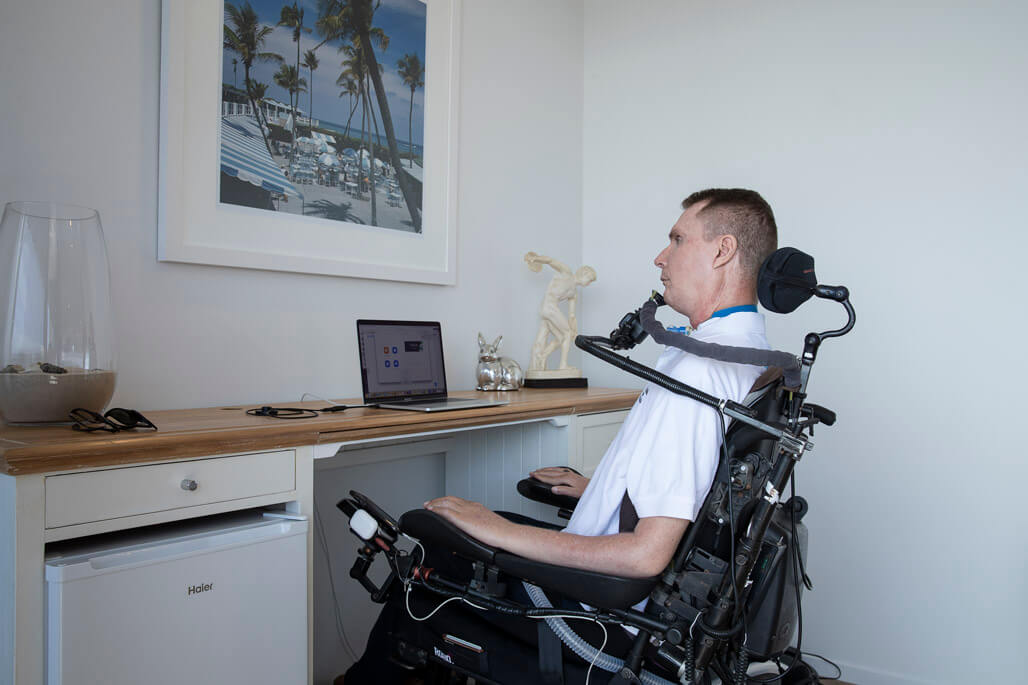The Specialist Disability Accommodation (SDA) Scheme is one of Australia’s greatest modern innovations and the National Disability Insurance Agency (NDIA) does a great job of giving people flexibility, control and choice over where and how to live. However, there are some circumstances where SDA participants may seek to review their application outcome — most commonly due to preferences around living in shared housing, scheme eligibility, the number of bedrooms allocated, and the SDA Design Category given.
We spoke to SDA Services’ Principal Consultant and Founder, Greg Barry, and SDA Review Consultant, Ben Pimley, about how to request an internal review of an SDA outcome and the Administrative Appeals Tribunal (AAT) process.
Greg Barry has been closely involved in the SDA space since its inception and is focused on assisting National Disability Insurance Scheme (NDIS) Participants on their SDA journeys and approvals. “We’ve been doing this work since early 2018 and it’s been a really privileged journey. Perry was possibly the first person to use the words ‘life-changing’ about the SDA but he’s certainly not the last. It’s now a very common statement and it always sits very nicely on our ears and in our hearts,” says Greg.
A reviewable decision
Greg says a decision needs to be ‘reviewable’ to start the review process. “It might be a surprise that some decisions by the NDIA under the NDIS Act aren’t reviewable,” explains Greg.
“The Good news is that — in our view — all SDA decisions are reviewable decisions. Section 99 of the NDIS Act, and in particular item 4, prescribes a reviewable decision as ‘a decision to approve the statement of participant support in a participant’s plan’.”
Your outcome in writing
The decision-maker must give written notice of the reviewable decision to each person directly affected. “So if there hasn’t been a written notification of a decision or if there’s any doubt, I urge participants and their supporters to write to the NDIA and seek confirmation,” says Greg.
“The decision-maker for SDA is the CEO of the scheme. So the ultimate starting point in going from a decision to a review is to define that written outcome and be confident it is the CEO or a CEO delegate who has made the decision.”
Seeking a review
Requests for a review can be made orally or in writing but Greg advises that putting a request in writing is best, “to put matters beyond doubt”. There is also a time limit to consider.
“Section 100, sub-section 2, outlines that requests for a review must be made within 3 months after receiving the notice. So keep this in mind in your calendar,” says Greg.
If you are seeking a review outside of this timeline, Greg says there is a workaround. “My recommendation would be to seek, under section 48 of the NDIS Act, a request for an unscheduled plan review — then raise the issue in that forum,” says Greg.
“If the outcome of that process is unsatisfactory in the participant’s view, then that can be a trigger for a reviewable decision and provide an effective restart of the process.”
“Or, if you’ve had a new plan put in place since you received your SDA outcome and it’s within that 90-day outcome date of receiving that new plan, you’re then able to go through the review process.”
New Material
SDA Review Consultant, Ben Pimley, specialises in working with participants and their support to draft and lodge review submissions. He says while participants can simply relodge their original application, bringing new material to the review can be more beneficial. “Attack it with a two-pronged approach — put a spotlight on what may have been missed in the first instance and bring in additional information,” says Ben.
Ben says one example is participants who are looking for a review to a shared living outcome. “In addition to a participant’s preference, there are also provisions within the SDA rules which set out a number of considerations for the decision-maker,” explains Ben.
“We collect additional evidence that shows how living independently may improve: a participant’s economic participation; make the participant more likely to engage in work or study; or how living alone may boost social participation and community engagement.”
Ben recommends bringing in more information provided by parents, family and friends, or allied health reports, that may highlight the mental health impact of residing with another participant instead of residing alone.
“Focus on the issues which present themselves in that initial decision and go from there,” says Ben. “The best outcome of a review under Section 100 is that the participant is able to go out into the market and look for the home of their dreams.”
The Administrative Appeals Tribunal
If participants aren’t satisfied following their review, Ben says going to the Administrative Appeals Tribunal (AAT) is the next step. “If you’re not happy with the outcome of that review, there is a very strict timeline of 28 days in which you then have the ability to go to the AAT,” says Ben.
“Participants shouldn’t be daunted by the proposition of going to the AAT — positive outcomes can result.”
Greg agrees and says the ATT process is about starting anew. “Everything is being considered fresh,” says Greg. “It’s not so much a process of reviewing prior decisions and attaching any judgments about them. It’s about looking at all the material that’s presented to the AAT on the day of the hearing.”
“All of the issues and fresh evidence is readily welcomed in the AAT. It’s a process that has a couple of milestones, which are case conferences, and they’re a really good opportunity for discussions to be had to try and resolve the matters,” says Greg.
“The process and the tribunal is very supportive of parties coming together and discussing and seeking to resolve matters. These matters are frequently resolved in that spirit of cooperation between the participants and the NDIA.”
“It ought not to be considered daunting because it is a well-supported process and it’s a rare thing for participants to leave the AAT unhappily, in our experience.”
You can contact the SDA Services team or book an appointment via www.sdaservices.com.au/contact.
Note: This blog is a general overview and should not be regarded as legal advice. While we do our best to keep the website information current, the Specialist Disability Accommodation scheme is constantly changing. Do seek your own professional advice.

